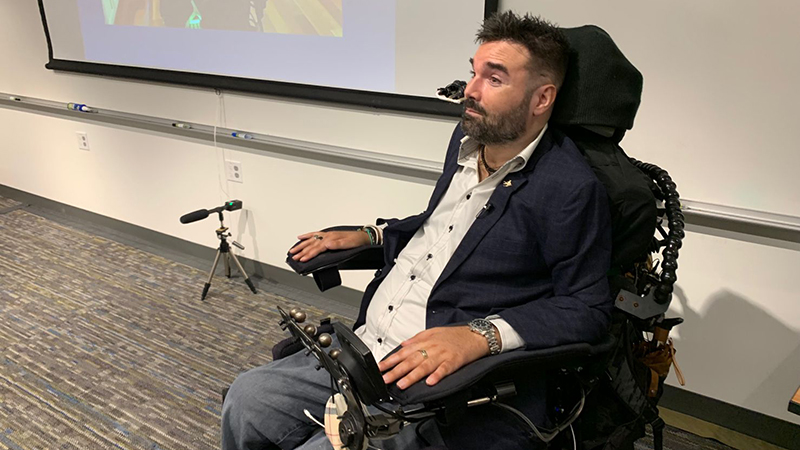March 15, 2024
For people with severe physical limitations such as quadriplegia, the ability to tele-operate personal assistant robots could bring a life-enhancing level of independence and self-determination. Allen School Ph.D. candidate Vinitha Ranganeni and her advisor, CREATE faculty member Maya Cakmak, have been working to understand and meet the needs of users of assistive robots.
This month, Ranganeni and Cakmak presented a video at the Human Robot Interaction (HRI) conference that illustrates the practical (and touching) ways deploying an assistive robot in a test household has helped Henry Evans require a bit less from his caregivers and connect to his family.
The research was funded by NIA/NIH Phase II SBIR Grant #2R44AG072982-02 and the NIBIB Grant #1R01EB034580-01
Their earlier study, Evaluating Customization of Remote Tele-operation Interfaces for Assistive Robots, evaluated the usability and effectiveness of a customized, tele-operation interface for the Stretch RE2 assistive robot. The authors show that no single interface configuration satisfies all users’ needs and preferences. Users perform better when using the customized interface for navigation, and the differences in preferences between participants with and without motor impairments are significant.
Last summer, as a robotics engineering consultant for Hello Robot, Ranganeni led the development of the interface for deploying an assistive robot in a test household, that of Henry and Jane Evans. Henry was a Silicon Valley CFO when a stroke suddenly left him non-speaking and with quadriplegia. His wife Jane is one of his primary caregivers.
The research team developed a highly customizable graphical user interface to control Stretch, a relatively simple and lightweight robot that has enough range of motion to reach from the floor to countertops.
Work in progress, but still meaningful independence
Stretch can’t lift heavy objects or climb stairs. Assistive robots are expensive, prone to shutting down, and the customization is still very complex and time-intensive. And, as noted in an IEEE Spectrum article about the Evans’ installation, getting the robot’s assistive autonomy to a point where it’s functional and easy to use is the biggest challenge right now. And more work needs to be done on providing simple interfaces, like voice control.
The article states, “Perhaps we should judge an assistive robot’s usefulness not by the tasks it can perform for a patient, but rather on what the robot represents for that patient, and for their family and caregivers. Henry and Jane’s experience shows that even a robot with limited capabilities can have an enormous impact on the user. As robots get more capable, that impact will only increase.”
In a few short weeks, Stretch made a difference for Henry Evans. “They say the last thing to die is hope. For the severely disabled, for whom miraculous medical breakthroughs don’t seem feasible in our lifetimes, robots are the best hope for significant independence,” says Henry.”
Collaborator, advocate, and community researcher Tyler Schrenk
Though it has been many months since the death of Tyler Schrenk, a CREATE-funded researcher and a frequent collaborator, his impact is still felt in our collective research.

Schrenk was a dedicated expert in the assistive technology field and led the way in teaching individuals and companies how to use assistive technologies to create independence. He was President & Executive Director of the Tyler Schrenk Foundation until his death in 2023.
Related reading:
- Evaluating Customization of Remote Tele-operation Interfaces for Assistive Robots, paper in International Conference on Robot and Human Interactive Communication (RO-MAN). IEEE, 2023.
- This Robot Could be Key to Empowering People with Disabilities, IEEE Spectrum, 2023.
- Setting the table for a brighter future: With help from robots, Allen School researchers are making social dining more accessible, Allen School article, Published by Roger Van Scyoc, May 18, 2023.
- Developing Accessible Tele-Operation Interfaces for Assistive Robots with Occupational Therapists, CREATE December Research Showcase